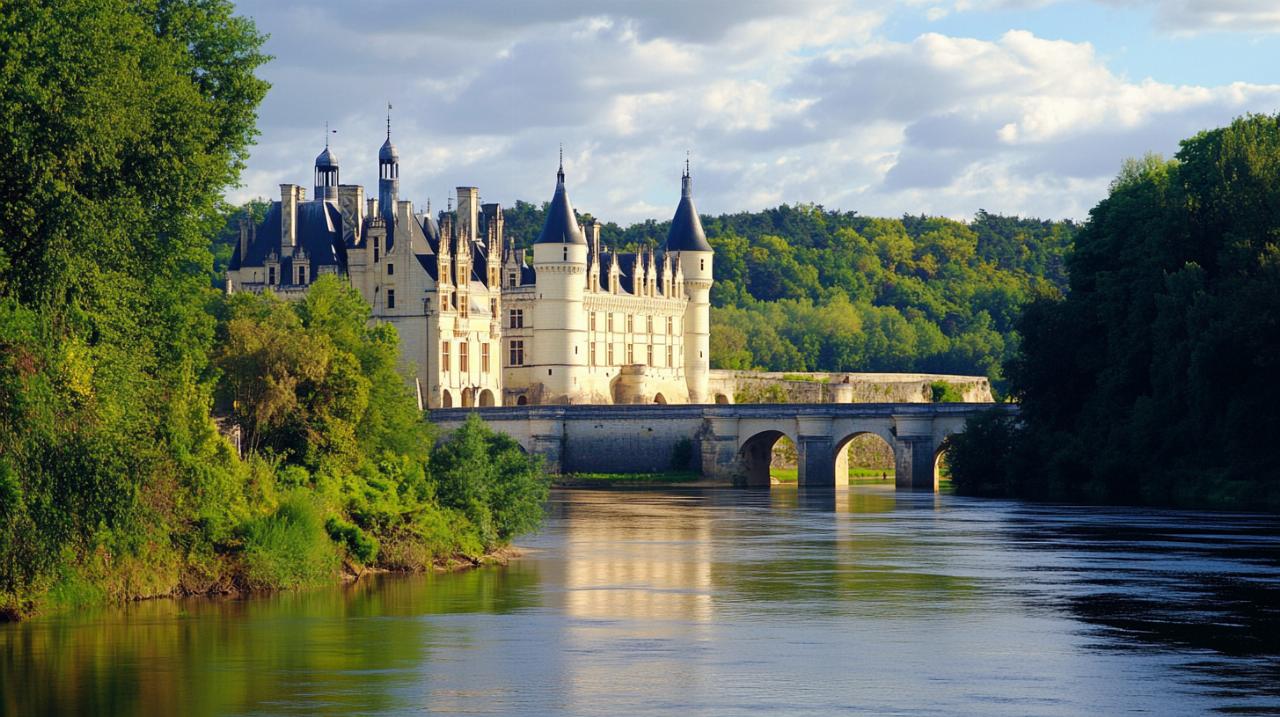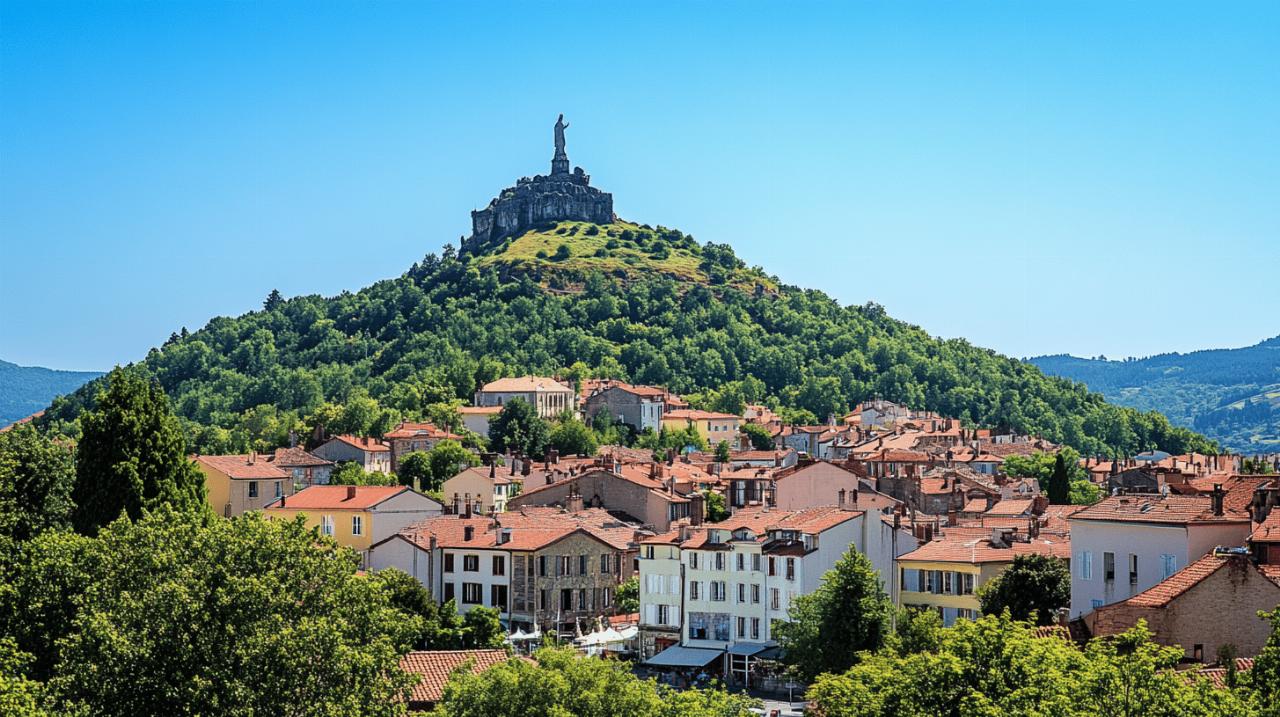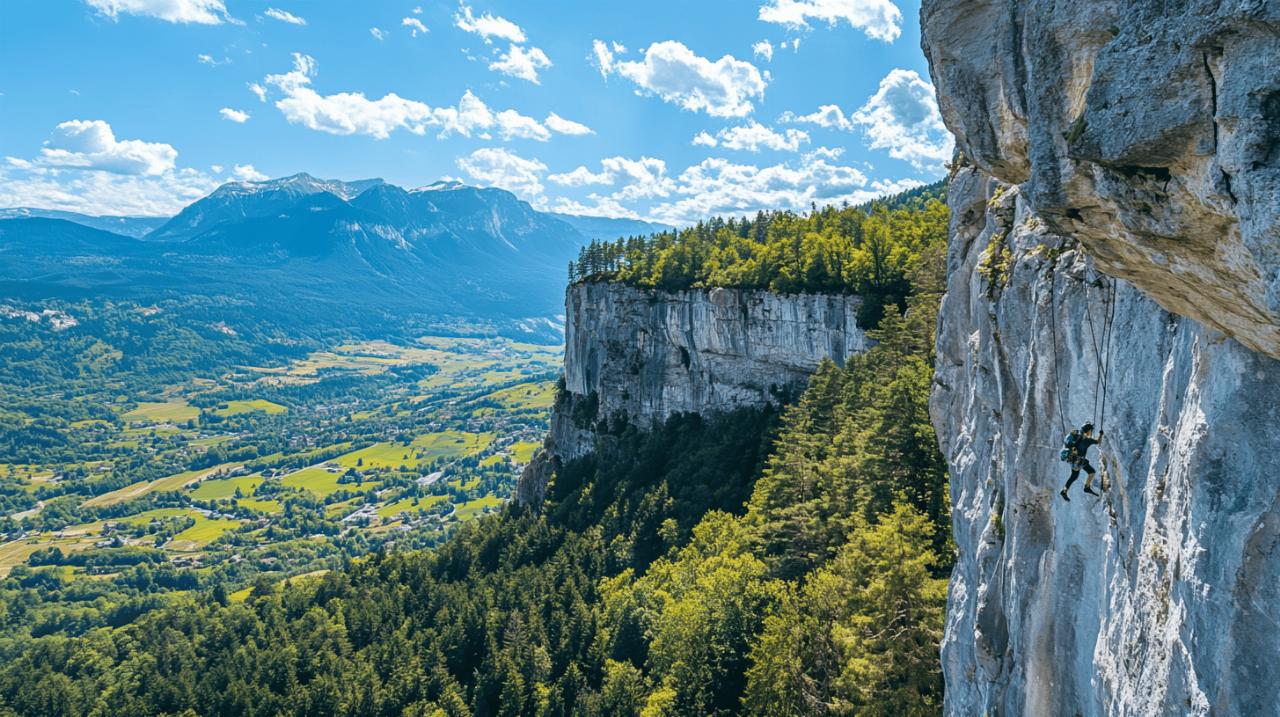Tucked away in the shimmering waters of the Bay of Naples, Ischia stands as a volcanic marvel waiting to be explored. This isn't your typical crowded tourist destination; rather, it offers a brilliant blend of natural wonders, historical depth, and genuine Italian charm. Whether you're after therapeutic thermal waters, rugged hiking trails, or simply a chance to savour exquisite local cuisine whilst gazing at breathtaking coastal panoramas, Ischia delivers on all fronts. With its lush landscapes earning it the nickname of the Green Island, this destination promises an escape that feels both rejuvenating and authentically Mediterranean.
Discovering ischia's historic treasures and architectural marvels
The magnificent castello aragonese: a medieval fortress worth exploring
Perched dramatically on its own rocky islet and connected to Ischia Ponte by a sturdy causeway, the Castello Aragonese commands attention from the moment you set eyes on it. This formidable fortress traces its roots back to the fifth century BC, though much of what stands today reflects medieval and Renaissance additions. As you wander through its ancient ramparts, you'll encounter chapels adorned with frescoes, verdant gardens that seem to defy their clifftop setting, and panoramic terraces offering sweeping views across the Gulf of Naples. The castle opens its gates from nine in the morning until sunset, inviting visitors to step back through centuries of history. Admission is set at twelve euros for adults, with generous discounts available for students and younger travellers, whilst children under nine can explore free of charge. It's a proper spectacle that captures the island's strategic importance through the ages, and the atmosphere within those stone walls feels almost tangible. The effort to reach the summit rewards you with vistas that stretch towards Capri and the distant Sorrento Peninsula, making it a highlight that should sit comfortably at the top of any itinerary.
Ancient Villages and Hidden Historical Gems Across the Island
Beyond the castle's imposing presence, Ischia harbours a wealth of historical sites scattered across its diverse landscapes. In Lacco Ameno, you'll find the Archaeological Museum of Pithecusae, home to the famed Nestor's Cup, an artefact of significant historical value. The museum welcomes visitors for a modest five euros, though it remains closed on Mondays. Meanwhile, the Cathedral of Santa Maria Assunta showcases stunning Baroque architecture near the castle, its ornate interior reflecting the island's deep religious traditions. Over in Forio, the Torrione di Forio stands as a reminder of the island's defensive past, now serving as a civic museum where you can delve into local history for just two euros. The Chiesa del Soccorso, also in Forio, offers not only spiritual solace but also some of the finest sea views on the island, particularly enchanting as the sun dips towards the horizon. These ancient villages and hidden gems provide a counterpoint to the island's natural attractions, weaving together a narrative of resilience, faith, and community that has endured through volcanic eruptions and foreign invasions alike.
Indulging in Ischia's World-Renowned Thermal Springs and Wellness Experiences
Top thermal parks: poseidon gardens and negombo's healing waters
The therapeutic powers of Ischia's thermal waters have drawn visitors for centuries, and today's travellers can experience these healing springs in spectacular settings. Poseidon Thermal Gardens rank among the most popular destinations, featuring an impressive array of pools heated to varying temperatures, each fed by natural volcanic springs. The gardens open from nine in the morning until seven in the evening, with full-day passes priced at forty-five euros for most of the season, rising to fifty euros during the peak month of August. Afternoon tickets offer a more budget-friendly option at forty euros, or forty-five in August, allowing you to enjoy the facilities from early afternoon onwards. Children benefit from discounted rates based on height, ensuring families can indulge without breaking the bank. Negombo presents an equally compelling option, nestled in a verdant bay and offering a similar range of thermal experiences. A full-day entry for one adult costs fifty euros, or ninety euros for a pair, whilst late afternoon access from four o'clock provides a more economical choice at thirty euros for one or sixty for two. Both parks blend natural beauty with thoughtful amenities, creating environments where relaxation feels effortless and the stresses of daily life simply melt away into the warm, mineral-rich waters.
Natural Hot Springs and Secret Thermal Beaches for the Adventurous Traveller
For those seeking a more authentic and budget-conscious thermal experience, Ischia offers several natural hot springs that require no admission fee whatsoever. Baia di Sorgeto stands out as a favourite among adventurous visitors, where volcanic heat warms the seawater to create a unique bathing experience. You'll need to descend a steep path or arrive by water taxi, but the effort is rewarded with an intimate setting where you can soak whilst gazing out at the Mediterranean. The Fumarole on Maronti Beach provide another fascinating encounter with the island's geothermal activity, where steam vents create pockets of intensely hot sand and water. Locals have been known to cook food wrapped in foil using this natural heat, a tradition that delights curious tourists. The Nitrodi Spring, one of the oldest thermal springs on the island, maintains a steady temperature of twenty-seven degrees Celsius and is celebrated for its particularly beneficial mineral content. These natural springs offer an unfiltered connection to Ischia's volcanic heart, stripping away commercial polish to reveal the raw, elemental forces that make this island so distinctive. They represent not just wellness opportunities but genuine adventures that bring you face to face with the island's geological wonders.
Exploring ischia's natural beauty: gardens, mountains, and coastal wonders
Giardini la mortella and mount epomeo: where botanical beauty meets breathtaking vistas
 The Giardini La Mortella stands as a horticultural masterpiece, lovingly created by Susana Walton, wife of the renowned British composer Sir William Walton. These botanical gardens cascade down a hillside near Forio, showcasing exotic plants from across the globe interspersed with trickling fountains, hidden temples, and thoughtfully placed seating areas that invite contemplation. The gardens open their gates on Tuesdays, Thursdays, Saturdays, and Sundays from nine in the morning until seven in the evening, with last entry at six. Adult tickets cost twelve euros, with reductions available for seniors and children, making it an accessible treat for visitors of all ages. The careful curation and maintenance transform a simple walk into a journey through diverse climatic zones, each section revealing unexpected botanical treasures. Rising high above these cultivated gardens, Mount Epomeo dominates the island's skyline at seven hundred and eighty-nine metres above sea level. The hiking trail from Fontana village climbs approximately four hundred metres over a distance of three kilometres, presenting a moderate challenge that rewards persistence with absolutely stunning panoramas. Near the summit, you'll discover the hermitage of San Nicola, carved into the rock face, alongside a restaurant where you can refuel whilst absorbing views that stretch across the entire island and beyond to the mainland.
The Giardini La Mortella stands as a horticultural masterpiece, lovingly created by Susana Walton, wife of the renowned British composer Sir William Walton. These botanical gardens cascade down a hillside near Forio, showcasing exotic plants from across the globe interspersed with trickling fountains, hidden temples, and thoughtfully placed seating areas that invite contemplation. The gardens open their gates on Tuesdays, Thursdays, Saturdays, and Sundays from nine in the morning until seven in the evening, with last entry at six. Adult tickets cost twelve euros, with reductions available for seniors and children, making it an accessible treat for visitors of all ages. The careful curation and maintenance transform a simple walk into a journey through diverse climatic zones, each section revealing unexpected botanical treasures. Rising high above these cultivated gardens, Mount Epomeo dominates the island's skyline at seven hundred and eighty-nine metres above sea level. The hiking trail from Fontana village climbs approximately four hundred metres over a distance of three kilometres, presenting a moderate challenge that rewards persistence with absolutely stunning panoramas. Near the summit, you'll discover the hermitage of San Nicola, carved into the rock face, alongside a restaurant where you can refuel whilst absorbing views that stretch across the entire island and beyond to the mainland.
Beach-hopping adventures: from citara's golden sands to sant'angelo's charming harbour
Ischia's coastline presents an embarrassment of riches when it comes to beaches, each offering its own character and appeal. Maronti Beach claims the title of longest, stretching for roughly three kilometres of golden sand backed by dramatic cliffs. It's accessible by bus from various points on the island or by water taxi from Sant'Angelo, with the latter option costing around five euros and providing a delightful mini-cruise along the coast. The Bay of San Montano and Bay of Citara both attract families and sun-seekers with their gentle waters and well-maintained facilities, whilst Chiaia Beach offers a particularly family-friendly atmosphere with shallow waters ideal for younger swimmers. The charming fishing village of Sant'Angelo deserves special mention, its harbour lined with colourful boats and waterfront restaurants serving freshly caught seafood. This picturesque settlement has managed to retain its authentic character despite its popularity, partly due to restrictions on vehicle access that preserve its pedestrian-friendly streets. Whether you're after beach clubs with full amenities or secluded coves where you can spread a towel on volcanic sand, Ischia's varied coastline ensures you'll find your perfect spot. The volcanic origins of the island mean that beaches range from fine golden sand to darker volcanic granules, each type offering a different sensory experience beneath your feet.
Savouring ischia's culinary delights and planning your perfect stay
Local flavours and traditional dishes: a gastronomic journey through island cuisine
The volcanic soil that shapes Ischia's landscape also enriches its agricultural output, creating conditions that yield exceptional produce and wines. The island's signature dish, coniglio all'ischitana, features rabbit slow-cooked with local herbs, tomatoes, and white wine, resulting in tender meat infused with the flavours of the Mediterranean. Farm-to-table establishments known as agriturismos offer authentic dining experiences where ingredients travel mere metres from garden to plate, with venues like Il Focolare and Cantina di Zio Jack earning particular praise from locals and visitors alike. The island's vineyards benefit immensely from the mineral-rich soil, producing distinctive wines that carry subtle volcanic notes. Casa D'Ambra, Cenatiempo, and Cantina Raustella welcome visitors for tastings, providing insight into traditional winemaking techniques that have been refined over generations. Fresh seafood naturally features prominently on menus across the island, particularly in coastal villages like Sant'Angelo where fishing boats still bring in the daily catch. Whether you're sampling pasta dressed with locally grown tomatoes and herbs, or indulging in a seafood feast whilst overlooking the harbour, Ischia's cuisine reflects its geography and heritage in every bite. The island also produces its own limoncello and other digestifs at local distilleries, offering another layer of gastronomic discovery for curious travellers.
Choosing Your Base: Accommodation Options and Neighbourhood Guide for Every Traveller
Selecting the right base on Ischia can significantly enhance your island experience, as each area offers distinct advantages. Ischia Porto serves as the main hub, providing excellent transport connections and easy access to shops, restaurants, and the ferry terminal. It suits travellers who prefer a more bustling atmosphere and appreciate having amenities within walking distance. Forio, on the western side of the island, attracts visitors seeking spectacular sunsets, particularly from the Chiesa del Soccorso, and offers a good balance between services and a more relaxed pace. For those prioritising tranquillity, Sant'Angelo presents an idyllic option, though its car-free centre means you'll need to park outside the village and walk in. Lacco Ameno appeals to visitors drawn to a quieter fishing village atmosphere whilst still maintaining reasonable access to island attractions. Accommodation ranges from boutique hotels and charming guesthouses to more upscale thermal spa resorts where you can literally step from your room into therapeutic waters. The island remains more affordable than neighbouring Capri or the Amalfi Coast, making it accessible to travellers with varying budgets. Visiting during May, June, or September offers the sweet spot of pleasant weather and thinner crowds, whilst July and August bring peak season bustle and higher prices. Getting to Ischia requires a ferry or hydrofoil from Naples, with services departing from Molo Beverello port, or from Pozzuoli, Sorrento, Procida, and Capri during summer months. Tickets typically cost between twenty-two and twenty-five euros, and the journey itself provides lovely views across the bay. Once on the island, hiring a scooter offers freedom to explore winding coastal roads, though buses provide a reliable alternative if you're not comfortable with two wheels on occasionally challenging terrain.







